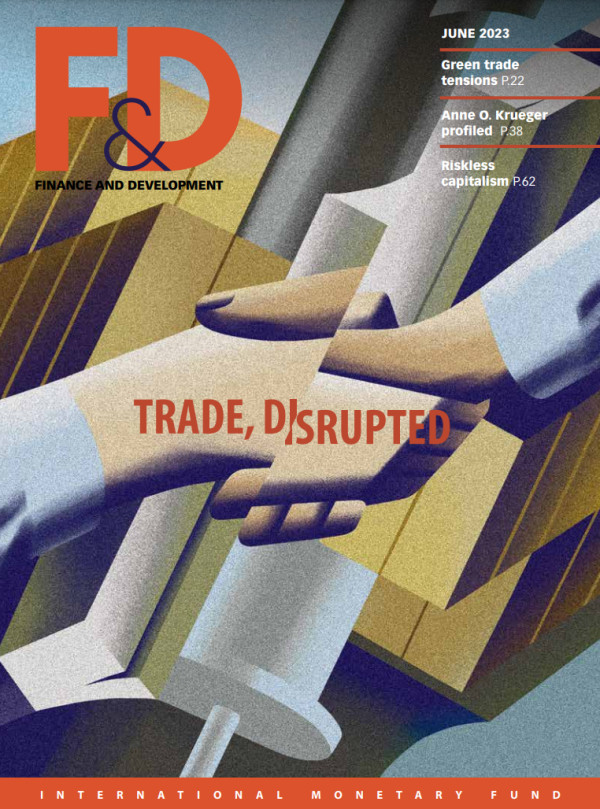Monetary policy committees need reform to avoid groupthink and ensure sound decision-making
Monetary policymaking requires complex real-time judgments. For that reason, in every advanced economy except Canada, monetary policy is delegated to a committee of experts rather than to a single decision-maker. In practice, however, decision-making has been impaired by the pitfalls of groupthink, tokenism, and marginalization of dissenting views. Indeed, central bank governance has not kept up with best practice in fostering the diversity of views by separating the roles of the board chair and chief executive officer (CEO) and by adopting procedures to ensure that every committee member has essentially the same degree of influence and accountability for its decisions.
The pitfalls of groupthink became apparent during the lead-up to the global financial crisis in 2008. The recession started in the US in December 2007 and in Europe in April 2008. At the Bank of England, one author of this article was the lone dissenter warning of the coming crisis (Blanchflower 2008); in contrast, the UK Monetary Policy Committee (MPC) inflation report issued in August 2008 made no reference to recession risks. In September 2008, shortly after the Lehman failure, the US Federal Open Market Committee (FOMC) concluded that upside risks to inflation and downside risks to economic growth remained roughly balanced and voted unanimously to maintain an unchanged policy stance. By early October, however, major central banks engaged in an unprecedented coordinated interest rate cut.
More recently, the global economy has been in uncharted waters since the onset of the COVID-19 pandemic, requiring difficult judgment calls about the economic outlook and the appropriate path of monetary policy. In that context, the symptoms of groupthink have been even more evident as many central banks have sought to present a unified front and speak with one voice, with only a tiny proportion of dissenting votes on crucial policy decisions. For example, at the 16 FOMC meetings held during 2021 and 2022, there were only two dissents among the total of 174 votes cast. In contrast, dissents were relatively common at the UK MPC meetings in 2022, including several meetings with 6-3 vote tallies.
Good judgment in monetary policymaking will surely remain crucial for the foreseeable future. Economic and financial conditions are likely to evolve rapidly in conjunction with the spread of artificial intelligence, quantum computing, and nanotechnologies. A macroeconomic model fitted to previous data can be useful in some contexts, but judgment and common sense will remain essential for interpreting incoming data, assessing the contours of the economic outlook, and identifying emerging risks to that outlook (Blanchflower 2021).
Central bank governance
Nonetheless, at many central banks, current governance practices are not conducive to fostering a diversity of views among the members of the MPC:
- The MPC chair is generally the CEO of the central bank, whom we henceforth refer to as “governor.” The chair serves a crucial role in disseminating information to the committee and in setting the agenda for its meetings. At many central banks, the governor also plays a key role in determining the appointment of other MPC members.
- Internal MPC members, including deputy governors and other central bank staff, may be inclined to defer to the governor’s views, especially if the governor is responsible for assessing their performance and determining their prospects for promotion.
- External MPC members may have only marginal influence on policy decisions, especially if they serve on a part-time basis and/or have limited access to internal analysis and staff expertise that are subject to the direction of the governor. The Federal Reserve Board of Governors has seven full-time members (including the chair and two vice chairs). However, no member of the Board of Governors has dissented from any FOMC decision since 2005.
Such arrangements are inconsistent with best practices in organizational management.
In the public sector, complex regulatory matters are generally determined by an independent agency whose board is responsible for determining its policies and procedures, and the senior executives of such agencies report to the full board, not merely to its chair. For example, the executive board of the Australian Prudential Regulatory Authority directly oversees all its official staff and department chiefs. Similarly, in the judicial system, the most complex and consequential legal cases are decided by a high court of distinguished jurists whose chief justice serves as first among equals. In the private sector, the board of a publicly traded corporation has fiduciary responsibility for setting its strategic objectives and overseeing management’s implementation of those objectives, and the board chair is generally not the same individual as the CEO. In fact, those governance practices are now followed by nearly all listed corporations in Australia, Canada, and the United Kingdom.
Proposed reforms
The process of selecting MPC members needs to ensure that the committee is composed of a diverse set of experts. Such diversity should encompass demographic characteristics (including gender, race, and ethnicity) as well as educational background and professional expertise. Moreover, the composition of the MPC should span the distinct geographic regions of the economy rather than reflecting merely the perspective of its primary financial center. The governing council of the European Central Bank includes the presidents of the national central banks, each of whom is appointed by government officials in that country. In contrast, the Bank of England’s MPC has comprised mostly longtime residents of the London metropolitan area, with relatively few members from other UK regions.
Every MPC member should serve on a full-time basis. It is practically inconceivable that any supreme court justice or key financial regulator would fill that role on a part-time basis while simultaneously continuing in some other professional occupation. Likewise, having full-time MPC members is essential in light of the importance and complexities of monetary policymaking and will substantially strengthen the committee’s ability to act promptly and decisively in the face of rapidly evolving circumstances.
Decision-making procedures are also crucial to fostering individual accountability and mitigating the risk of groupthink. In the past, the phrase decision-making by consensus
had largely positive connotations. However, modern organizational management recognizes
that such practices tend to discourage innovative thinking and marginalize anyone with a different viewpoint (outside the consensus). Consequently, every MPC policy decision should be subject to a vote, and all MPC members should be held accountable for their own individual views.
In analyzing the inflationary episodes of the 1970s, one key lesson learned was that monetary policy decisions need to be insulated from political interference. Indeed, that lesson led to the strengthening of the central bank’s statutory independence in many jurisdictions—most notably, regulations ensuring that central bank officials cannot be terminated except for malfeasance. Such independence is enhanced by staggering the terms of MPC members, appointing each member to a single nonrenewable term, and ensuring that the appointment process is systematic and transparent rather than relying on the discretion of any single government official (Archer and Levin 2019).
Communicate effectively
MPC members should not be constrained to speak with one voice in their public communications; rather, they should be accountable for conveying their own individual views regarding complex judgments on which reasonable experts may disagree. To avoid cacophony, the MPC should follow the standard practice in the judicial system, where a panel of judges conveys each decision by issuing the ruling of the majority together with concurring opinions and dissenting views. Such an approach has a long track record of providing clarity about the rationale for the majority’s decision as well as the reasoning behind alternative views. Likewise, this mode of communicating monetary policy decisions can strengthen public confidence that decisions are being made by a diverse team of experts.
The MPC should not focus simply on characterizing the contours of the baseline outlook. Dot plots depict the range of views about the baseline but no information about risks. Fan charts provide a visual impression of the uncertainty surrounding the baseline outlook but do not provide any information about which risks are judged to be most salient.
Thus, in its policy deliberations and communications, the MPC needs to engage in scenario analysis and contingency planning. In particular, policymakers need to identify material risks and consider policy actions that could mitigate such risks or that would likely be taken if such a scenario materializes. This approach is parallel to the stress tests now conducted by bank regulators in many jurisdictions. In effect, the MPC should be engaged in stress-testing for monetary policy (Levin 2014; Bordo, Levin, and Levy 2020).
Monetary policy has direct effects on practically everyone: the cost of goods and services paid by consumers, the job opportunities and wages of workers, and the rate of return on the savings of retirees. Consequently, it is not sufficient for policymakers to communicate in technical terms to a limited audience of financial market participants; rather, a spectrum of communication tools is needed to explain these policy decisions to ordinary families and businesses.
Broader implications
These considerations underscore the importance of governance reforms to ensure that monetary policy is determined by a diverse team of full-time experts with shared responsibility for making those decisions. Such arrangements should also be incorporated into other aspects of central banking, including macroprudential regulation, provision of emergency liquidity, and payment system oversight. Implementing these reforms will bring central bank governance into alignment with international best practices for public agencies as well as private institutions.
Recent experience has highlighted the dangers of groupthink, which can lead to sudden policy reversals that undermine the central bank’s credibility and diminish the effectiveness of monetary policy. Governance reforms will be crucial for ensuring the effectiveness of monetary policymaking in facing the inevitable complex and evolving challenges of the coming years and decades.
Opinions expressed in articles and other materials are those of the authors; they do not necessarily reflect IMF policy.
References:
Archer, D., and A. Levin. 2019. “Robust Design Principles for Monetary Policy Committees.” In RBA Annual Conference Volume, edited by J. Simon, 233–51. Sydney, Australia: Reserve Bank of Australia.
Blanchflower, D. 2008. “Inflation, Expectations, and Monetary Policy.” Speech given at the Royal Society of Edinburgh, April 29, 2008.
Blanchflower, D. 2021. Not Working: Where Have All the Good Jobs Gone? Princeton, NJ: Princeton University Press.
Bordo, M., A. Levin, and M. Levy. 2020. “Incorporating Scenario Analysis into the Federal Reserve’s Policy Strategy and Communications.” NBER Working Paper 27369, National Bureau of Economic Research, Cambridge, MA.
Levin, A. 2014. “The Design and Communication of Systematic Monetary Policy Strategies.” Journal of Economic Dynamics and Control 49 (December): 52–69.










